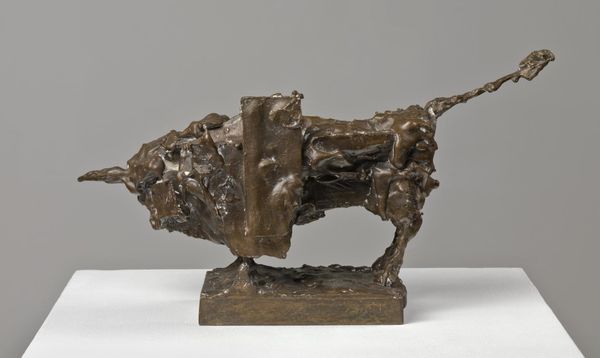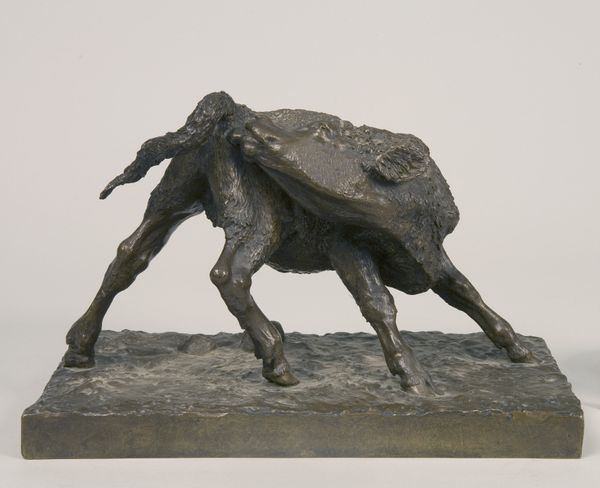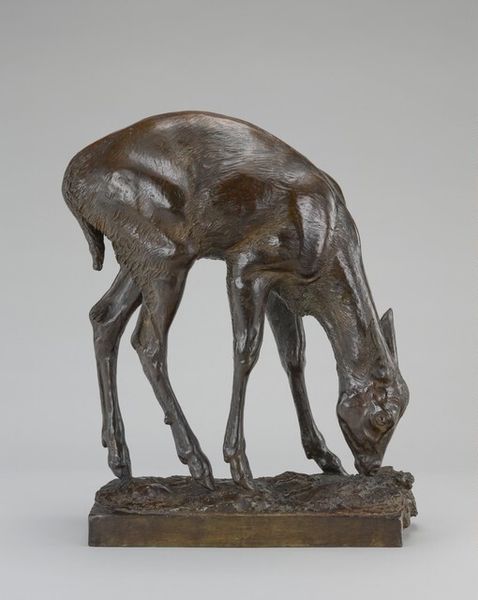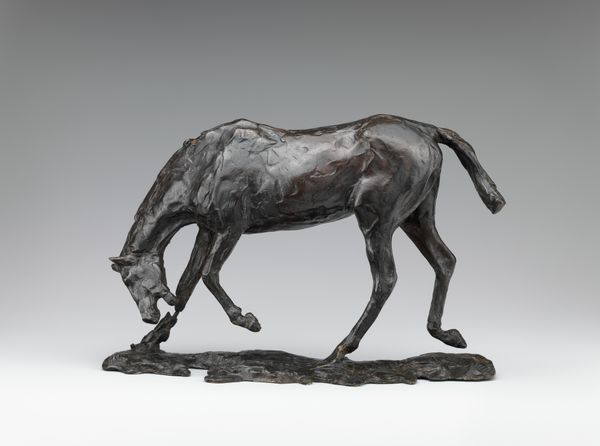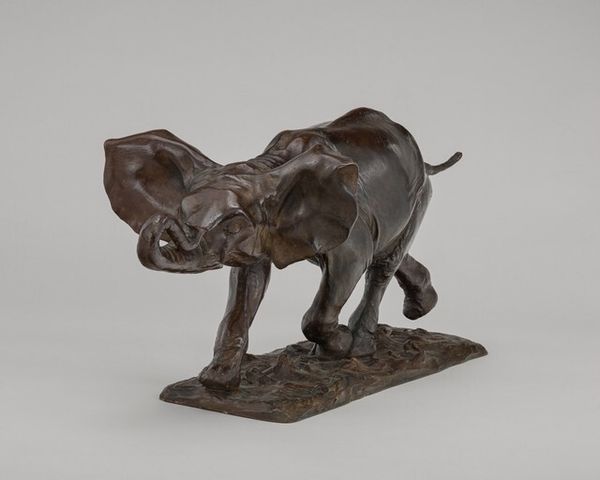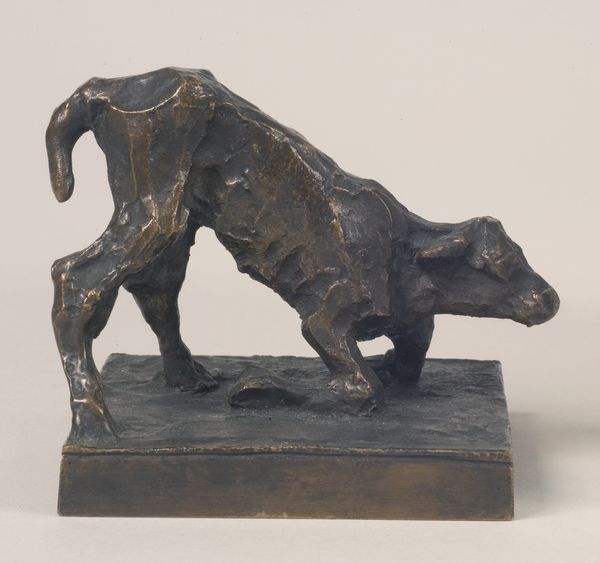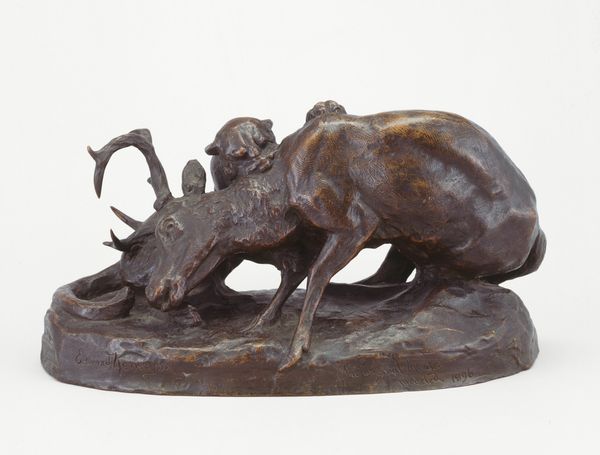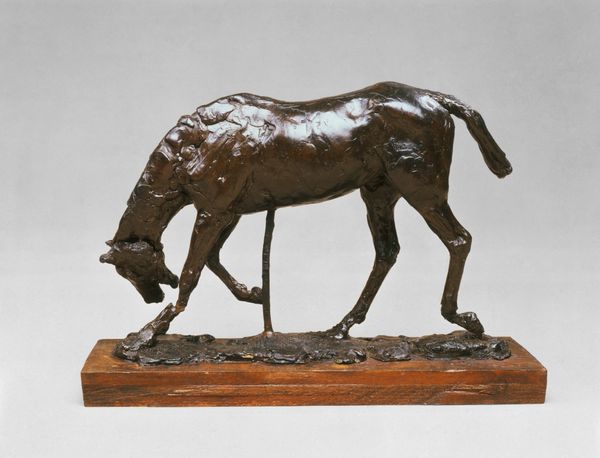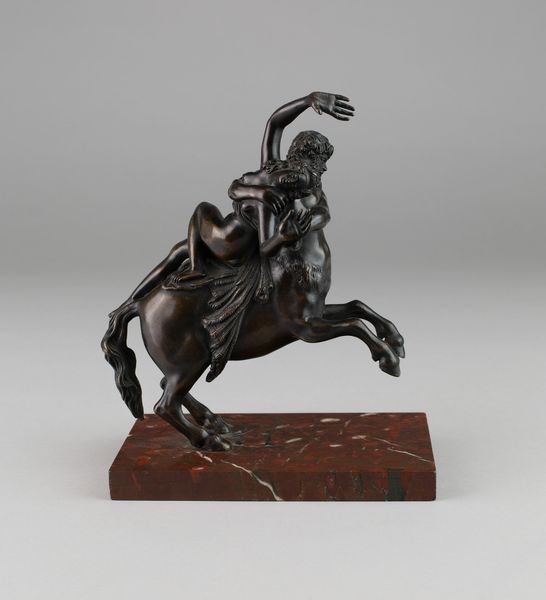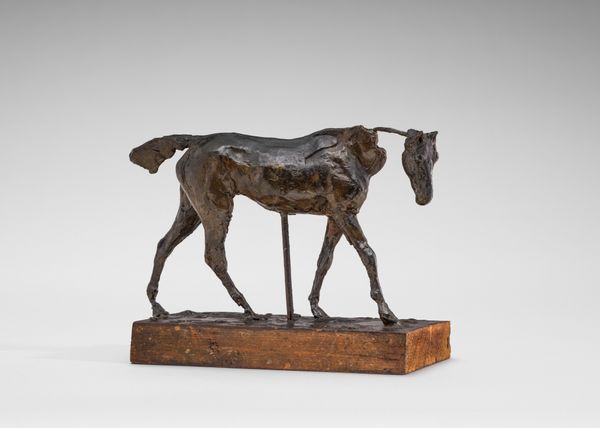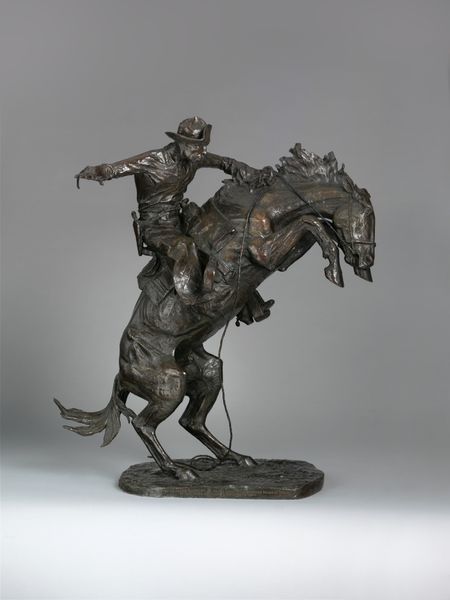
metal, bronze, sculpture
#
animal
#
metal
#
sculpture
#
landscape
#
bronze
#
figuration
#
sculpture
#
realism
Dimensions: overall: 27.9 x 32.7 x 16.5 cm (11 x 12 7/8 x 6 1/2 in.) gross weight: 11 lb.
Copyright: National Gallery of Art: CC0 1.0
Curator: "The Empty Saddle," a bronze sculpture created by Henry Merwin Shrady around 1900, depicts a horse, head bowed, grazing. Editor: There’s such a melancholy weight to it, isn't there? The slump of the horse, the stillness...it's almost like a moment suspended in time, heavy with unspoken narratives. Curator: The lack of a rider speaks volumes. Consider the cultural context of the American West, that period. The horse alone could represent displacement, or an absent protagonist, yes? The bronze patination almost echoes the dust and grit of that era. Editor: Exactly! We must look critically at the mythology of the West. Is this a lament for a lost cowboy, or is it maybe, something more pointed: a reflection on the Indigenous communities displaced, their traditions made invisible? The empty saddle gains a potent, ambivalent symbolism. Curator: I see your point. A deeper dive would be crucial. The horse, after all, has ancient symbolic roots, a signifier of power, freedom, conquest…its domestication is intertwined with civilization itself. Shrady plays on our established ideas. Editor: And the accoutrements atop it, so still…They’re a deliberate clue, frozen signifiers— the saddle, the rifle, and the rest are powerful symbols of Western expansion, even its violence. Whose absence does the sculpture really memorialize? Curator: Shrady also appears to suggest the deep entanglement of the natural world with the harsh demands of the period. It could represent an appeal to reassess our reliance on a violent past. Editor: Art’s duty, sometimes, is to unearth complexity. What seems simple, even traditional, may ask hard questions of legacy and loss. This is precisely how “The Empty Saddle” does this work for our audience. Curator: You’ve given me much to think about, interpreting an established work like this. The dialogue shifts, but hopefully we become increasingly perceptive to it over time. Editor: That's the ideal, isn't it? Engaging actively with the past, inviting art to challenge us now. This piece deserves sustained reevaluation.
Comments
No comments
Be the first to comment and join the conversation on the ultimate creative platform.
